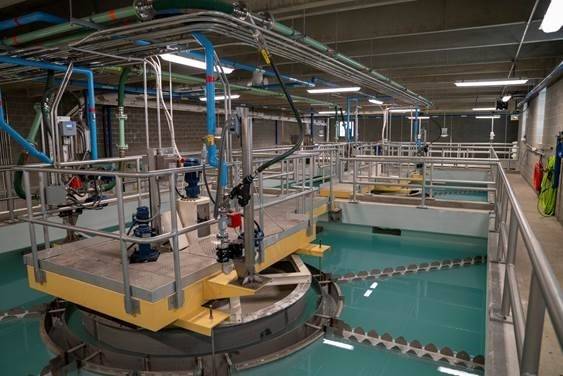Bolton & Menk Inc issued the following announcement on Nov. 16.
High levels of salt in the environment can cause safety concerns in many different areas, from the health of aquatic life and community residents to the functionality of infrastructure. Salt (chloride) enters the ecosystem from many different sources, in Minnesota about 22% of the chloride mass in receiving waters comes from wastewater treatment plants, according to the Minnesota Pollution Control Agency (MPCA). In Morris, Minnesota this problem has been realized, and resolved at the source.
In order to combat the high levels of chloride in the Pomme de Terre River from the local wastewater treatment plant, the City of Morris and Bolton & Menk, Inc. decided to treat the problem at the source – the water treatment plant – for a more cost-effective solution. The hard groundwater that supplies most homes and businesses in Morris and surrounding towns, most likely goes through a home ion exchange water softener to remove calcium and magnesium with salt. The result leaves skin and hair soft and makes cleaning easier. However, levels of salt over 180 mg/L can be potentially harmful for individuals with high blood pressure, cardiovascular disease, heart disease, or kidney problems.
Once water leaves your home what happens?
Wastewater treatment facilities aren’t built to remove salt from the water entering their systems because it’s extremely expensive, so that salt discharges into rivers, lakes, and streams. This is extremely harmful to aquatic life, like fish, aquatic insects, and amphibians. Even at lower levels it can negatively affect aquatic life and plant structure, diversity, and reproductivity. Because of these dangers, the MPCA sets compliance requirements for wastewater treatment plants’ effluent chloride limits.
“For most communities in the Upper Midwest, home water softeners are the primary source of salt at wastewater plants. To reduce salt levels entering the environment, comply with state regulations and protect aquatic life, centralized water softening should be considered as an option as funds allow,” said Kris Swanson, principal environmental engineer at Bolton & Menk.
A Low Salt Diet
The city worked with Bolton & Menk, to design and construct a new softening water treatment facility that will help the city to meet the chloride limit at the wastewater treatment facility. Through the water system evaluation, the city and Bolton & Menk evaluated options to meet the chloride limit and narrowed down two softening options—reverse osmosis and lime and soda ash. After evaluating each option, lime and soda ash softening was selected as the best process for the city to meet its goals. This treatment system is very water efficient, removes and reduces other constituents from enter the wastewater stream, and was the best long-term solution to meet current and potential future discharge limits. The new facility meets Primary and Secondary Drinking Water Standards specified by the U.S. Environmental Protection Agency (EPA) and Minnesota Department of Health (MDH), as well as reduces the approximate hardness reduction of the city’s treated water supply by 90 percent. This means that residents in the area will receive already softened water to their homes, resulting in cost savings on salt and softening equipment. The solution is expected to reduce the chloride concentration to the WWTP from 830 mg/L to less than 400 mg/L, which is below the limits issued by MPCA.
We want all of our communities to enjoy clean, safe water – from personal use like drinking and swimming, to benefits for animals and fish. Fixing the chloride effluent problem at the source has resulted in a safe, sustainable, and beautiful community for Morris.
Original source can be found here.

Source: Bolton & Menk Inc



 Alerts Sign-up
Alerts Sign-up